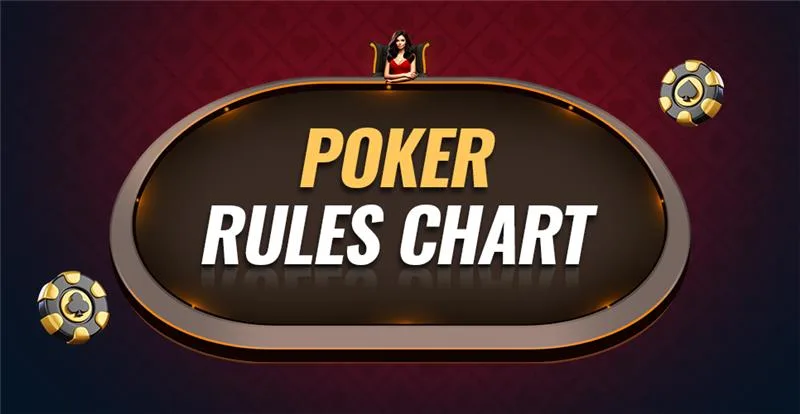Poker Rules Chart: Hand Rankings & Game Rules Simplified

Poker is a strategic card game where players compete to create the best possible hand, or bluff their way to victory. The foundation of every poker variant is a standardised system of hand rankings, combined with betting structures that determine how players wager chips throughout the game. As one of the most popular online earning games, poker rewards skill, strategy, and quick thinking. By understanding these universal Poker rules, newcomers and experienced players alike can quickly assess their hand’s strength and make smarter decisions at the table. Whether you’re learning Texas Hold’em, Omaha, or classic 5-card draw, mastering the chart of hand rankings is key to poker success.
Must Read: 6 Different Type Of Poker Card Games Played In India
Poker Hand Rankings Chart (High to Low)
Understanding hand rankings is essential. Here’s a definitive chart for most popular variants:
| Rank | Hand Name | Cards Needed | Example | Description |
| 1 | Royal Flush | 5 | A♥ K♥ Q♥ J♥ 10♥ | Top five consecutive cards, same suit |
| 2 | Straight Flush | 5 | 9♠ 8♠ 7♠ 6♠ 5♠ | Any five consecutive cards, same suit |
| 3 | Four of a Kind | 4+1 | Q♣ Q♦ Q♥ Q♠ 7♦ | Four cards of same rank |
| 4 | Full House | 3+2 | 3♠ 3♣ 3♦ 6♣ 6♠ | Three of a kind + a pair |
| 5 | Flush | 5 | K♣ 10♣ 8♣ 6♣ 3♣ | Five cards, same suit |
| 6 | Straight | 5 | J♣ 10♥ 9♣ 8♦ 7♠ | Five consecutive cards, any suit |
| 7 | Three of a Kind | 3+2 | 8♠ 8♥ 8♦ Q♣ 3♠ | Three cards of same rank |
| 8 | Two Pair | 2+2+1 | 4♣ 4♠ 9♦ 9♣ J♦ | Two pairs of different ranks |
| 9 | One Pair | 2+3 | 7♣ 7♠ K♠ 5♦ 3♣ | Two cards of same rank |
| 10 | High Card | 1+4 | A♠ 10♦ 8♣ 5♣ 2♠ | None of the above—highest card wins |
Poker Rules Explained – Texas Hold’em Format
Texas Hold’em is the most popular poker variant globally. Here’s a step-by-step breakdown:
- Blinds: Two players left of the dealer post the small blind and big blind (forced bets).
- Hole Cards: Each player receives two private cards, face down.
- First Betting Round (Pre-Flop): Players may call (match big blind), raise, or fold.
- The Flop: Three community cards are dealt face up in the center.
- Second Betting Round: Players evaluate their hand and may check, bet, call, raise, or fold.
- The Turn: A fourth community card is revealed.
- Third Betting Round: Another chance to bet or fold.
- The River: The final (fifth) community card is dealt face up.
- Final Betting Round: Players make their final moves (bet, call, raise, fold, or check).
- Showdown: If two or more players remain, hands are revealed. The best five-card poker hand wins the pot.
- New Hand/Next Round: Dealer button moves clockwise, and a new game begins.
Suggested Read: What is Short Deck Poker? Tips, Tricks to Win Six-Plus Hold’em
How to Read a Poker Hand
When reading a poker hand, always compare card ranks from the highest down. A pair of Aces beats a pair of Queens. For five-card hands (like flushes or straights), the highest top card wins if both hands qualify (e.g., flush with ace top card beats flush with king).
Remember:
- Suits aren’t ranked in poker.
- Hand categories outrank one another (any flush beats any straight, etc.).
- If two players have the same type of hand, the highest card breaks the tie.
Consistently using the Poker hand ranking chart while you play helps reduce mistakes and gives you confidence to make quick, effective decisions.
Common Mistakes Beginners Make in Poker
- Misreading the Board: Not seeing possible straights or flushes with community cards.
- Overvaluing Weak Hands: Going all-in with low pairs or only high cards.
- Showing Tells: Giving away hand strength through nervous behavior or betting patterns.
- Chasing Unlikely Draws: Risking too many chips chasing improbable hands.
- Ignoring Position: Forgetting the importance of acting last or playing aggressively in late position.
- Betting Inconsistently: Switching between tiny and huge bets unpredictably, which reveals strategy.
- Not Knowing the Rules: Basic oversights like acting out of turn or misunderstanding minimum raises.
Avoid these errors and use poker rules charts for a quick confidence boost.
Suggested Read: Learn to Play Poker Online: A Beginner’s Guide to Getting Started
Poker Game Variants & Rule Differences
| Variant | Cards Dealt | Community Cards | Max Players | Betting Structure | Unique Rules or Tips |
| Texas Hold’em | 2 | 5 | 2–10 | No-limit (mostly) | Use any combo of 7 cards |
| Omaha | 4 | 5 | 2–10 | Pot-limit (mostly) | Must use 2 hole + 3 community |
| 7 Card Stud | 7 | None | 2–8 | Fixed-limit | No communal cards, some face up |
| 5 Card Draw | 5 | None | 2–6 | Varies | Draw new cards in one round |
| Short Deck (6+) | 2 | 5 | 2–10 | No-limit | Deck uses 6–Ace, hand rankings shift |
| Open Face Chinese | 13 | None | 2–4 | Point-based | Build three poker hands per round |
| Razz | 7 | None | 2–8 | Fixed-limit | Lowest hand wins (A-2-3-4-5 best) |
Always check the variant-specific rules before playing, as hand rankings or required cards may differ.
Conclusion
Poker is a thrilling blend of strategy, psychology, and skill, but it always boils down to the hand rankings and core rules. Use this chart as your quick reference any time you’re at the table, and you’ll learn faster, play better, and avoid beginner mistakes with every hand. Happy playing!
FAQs for Poker Rules Chart
Each player receives cards, bets in turn, and tries to win chips by having the best hand or making others fold.
A “3-bet” is when a player re-raises after an initial raise and a first re-raise, typically on the pre-flop.
There are four betting rounds: pre-flop, flop, turn, and river. Players can call, raise, or fold in each round.




